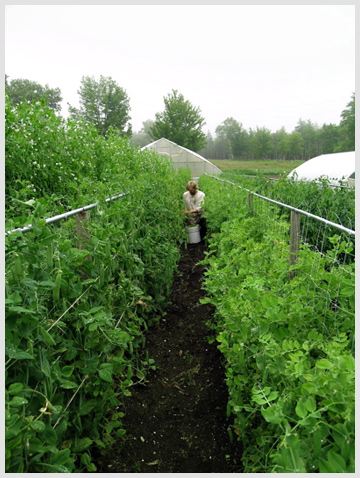 Plant on Patriots' Day and your peas could look this good
Plant on Patriots' Day and your peas could look this good on the Fourth of July. Photo: Eric Sideman

This article is provided by the Maine Organic Farmers and Gardeners Association (MOFGA), PO Box 170, Unity, ME 04988; 207-568-4142; mofga@mofga.org; www.mofga.org. Joining MOFGA helps support and promote organic farming and gardening in Maine and helps Maine consumers enjoy more healthful, Maine-grown food. Copyright 2008.






